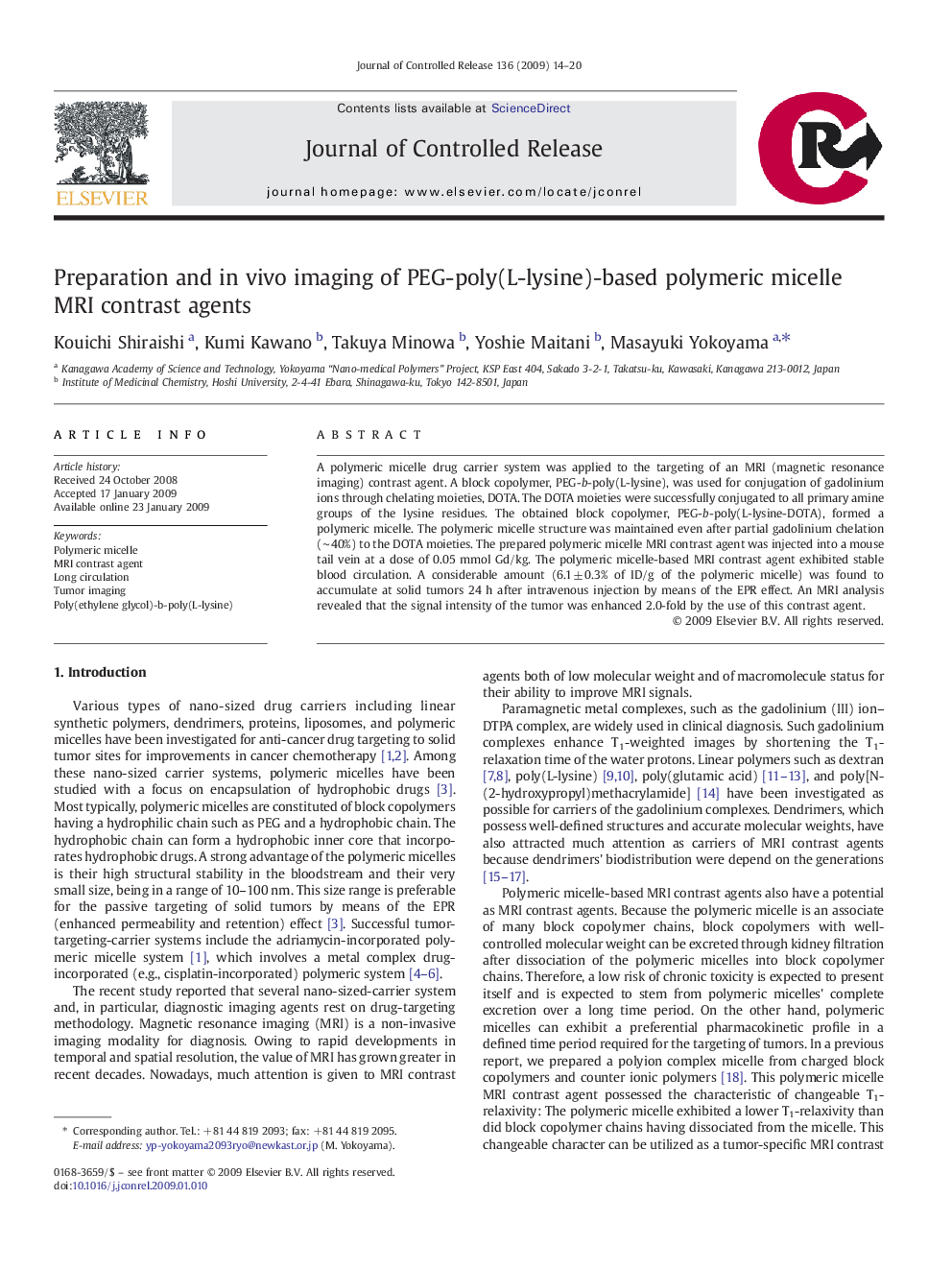| Article ID | Journal | Published Year | Pages | File Type |
|---|---|---|---|---|
| 1426324 | Journal of Controlled Release | 2009 | 7 Pages |
A polymeric micelle drug carrier system was applied to the targeting of an MRI (magnetic resonance imaging) contrast agent. A block copolymer, PEG-b-poly(L-lysine), was used for conjugation of gadolinium ions through chelating moieties, DOTA. The DOTA moieties were successfully conjugated to all primary amine groups of the lysine residues. The obtained block copolymer, PEG-b-poly(L-lysine-DOTA), formed a polymeric micelle. The polymeric micelle structure was maintained even after partial gadolinium chelation (∼ 40%) to the DOTA moieties. The prepared polymeric micelle MRI contrast agent was injected into a mouse tail vein at a dose of 0.05 mmol Gd/kg. The polymeric micelle-based MRI contrast agent exhibited stable blood circulation. A considerable amount (6.1 ± 0.3% of ID/g of the polymeric micelle) was found to accumulate at solid tumors 24 h after intravenous injection by means of the EPR effect. An MRI analysis revealed that the signal intensity of the tumor was enhanced 2.0-fold by the use of this contrast agent.
Graphical abstractAn anionic block copolymer formed a polymeric micelle MRI contrast agent for in vivo tumor imaging.Figure optionsDownload full-size imageDownload as PowerPoint slide
